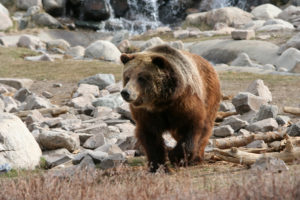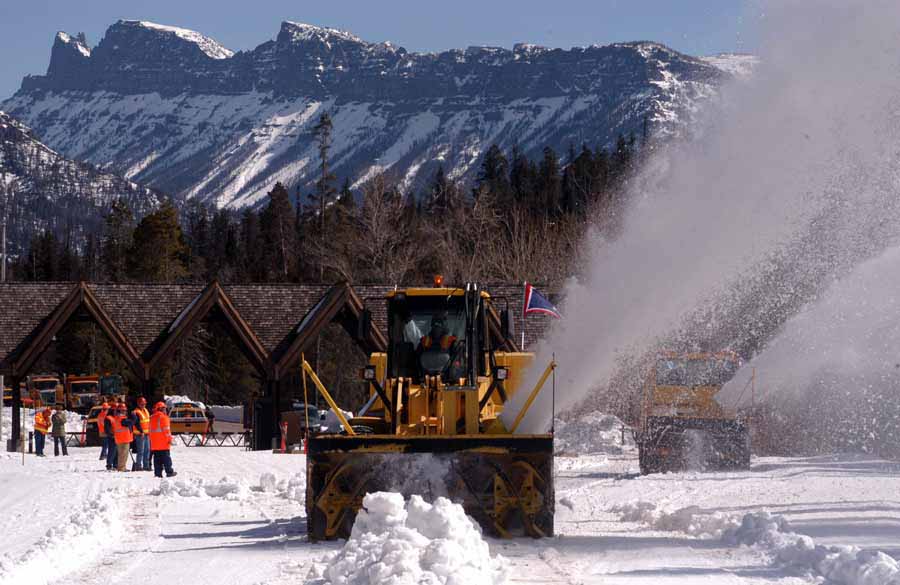Yellowstone: “First Bear of Spring” Emerges from Hibernation
Written by Andrew-Rossi on March 9, 2022
It’s a sign of spring in Yellowstone National Park: the first grizzly of the season has emerged from hibernation and is voraciously foraging for food.
On Monday, March 7, a pilot supporting Yellowstone National Park wildlife research observed the first grizzly bear of 2022 – an adult walking in a meadow in the west-central part of the park.
The first bear of 2022 is most likely a male based on bear biology. Male grizzlies come out of hibernation in early March, while females and their cubs emerge in April and early May.
The first bear sighting of 2022 falls into the same timeframe when “the first bear of spring” is typically spotted.
Historically, Yellowstone’s first bear tends to emerge in the early part of March. The 2022 sighting is within the same range as the previous “first bears of spring.”
On Saturday, March 13, another pilot spotted the first grizzly of 2021 interacting with wolves at a carcass in the northern part of the park. The first bear of 2020 was seen on March 7.
While this might be exciting for many, it’s a dangerous time to see and get close to any grizzly in Yellowstone.
When bears emerge from hibernation, they look for food and often feed on elk and bison that died over the winter. Sometimes, bears will react aggressively to encounters with people when feeding on carcasses.
“All of Yellowstone National Park is bear country: from the deepest backcountry to the boardwalks around Old Faithful,” said Yellowstone officials in a March 8 press release.
The National Park Service and Yellowstone officials ask visitors to protect themselves “the bears people come here to enjoy” by following a list of guidelines.
- Prepare for a bear encounter.
- Carry bear spray, know how to use it, and make sure it’s accessible.
- Stay alert.
- Hike or ski in groups of three or more, stay on maintained trails and make noise. Avoid hiking at dusk, dawn, or at night.
- Do not run if you encounter a bear.
- Stay 100 yards (91 m) away from black and grizzly bears. Approaching bears within 100 yards is prohibited. Use binoculars, a telescope, or a telephoto lens to get a closer look.
- Store food, garbage, barbecue grills, and other attractants in hard-sided vehicles or bear-proof food storage boxes to prevent bears from accessing food.
- Report bear sightings and encounters to a park ranger immediately.
- Learn more about bear safety.
Kerry Gunther, Yellowstone’s bear management biologist, says visitors should avoid certain areas to reduce their risk of an accidental bear encounter.
“Spring visitors . . . in the park can reduce the chances of encountering bears by avoiding low elevation winter ranges, thermal areas, and south-facing slopes where bears seek out ungulate carcasses and spring vegetation shortly after emerging from winter dens,” Gunther says.
While firearms are allowed in the park, the discharge of a firearm by visitors violates park regulations. Bear spray has proven effective in deterring bears defending cubs and food sources. It can also reduce the number of bears killed by people in self-defense.
Typically, the park restricts certain visitor activities in locations with a high density of carcasses – and bears.
On March 10, five days before most of the park’s roads close for spring plowing operations, restrictions will begin in some bear management areas. Most Yellowstone roads will reopen – weather-permitting – on April 15.


